Advancing the science of human milk to benefit more infants
Earlier this year the International Conference on Human Milk Science and Innovation (ICHMSI) took place in Barcelona, Spain. Founded by Prolacta Bioscience, ICHMSI brings together renowned scientists, clinicians and parent advocates from around the world to discuss developments in human milk nutrition, thus ensuring that the latest clinical research will benefit critically ill and premature babies. Although attendees came from 18 different countries, four words were on everyone’s lips: exclusive human milk diet (EHMD).
Speakers at the International Conference on Human Milk Science and InnovationWhat is an EHMD, how can it be applied in clinical practice and what impact does it have on critically ill and premature babies? Unfortunately breast milk alone does not provide enough nutrition for preterm and very low birthweight (VLBW) infants and this is why clinicians add fortifiers to their feeds. Traditional cows’ milk-derived fortifiers have been associated with enteral feeding intolerance, onset of milk allergy and fatty acid calcium stone formation. An EHMD is achieved when 100% of the protein, fat and carbohydrates in an infant’s diet are derived from human milk. This diet includes a human milk-based human milk fortifier. No substances derived from cows’ milk are added.
Infant asked four of the speakers at ICHMSI for their insights on achieving healthy growth using an EHMD.
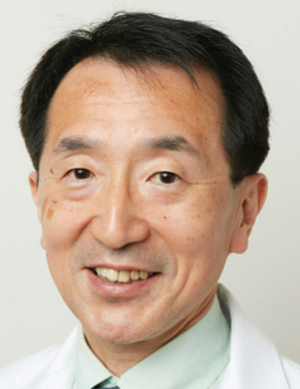
Professor Katsumi Mizuno of Showa University School of Medicine, Tokyo, Japan, works on standardisation of enteral nutrition for very preterm infants and co-authored the recently published Japan Pediatric Society policy statement for enteral nutrition.
Can you tell us about the new policy statement for enteral nutrition in preterm and VLBW infants?
“Mother’s own milk (MOM) is best for very preterm infants and if MOM is not available, donor human milk (DHM) is second best. In Japan, we now have human milk banks and so therefore the time is right to issue a policy statement that sets out how we will create a system to supply an EHMD to preterm and VLBW infants consisting of human milk with the addition of a human milk-based fortifier.
“An EHMD has been shown to reduce the complications of babies born at <1,500g. There is evidence that early nutrition is important to prevent bronchopulmonary dysplasia and retinopathy of prematurity in preterm infants. We have not experienced any cases of necrotising enterocolitis (NEC) with MOM or DHM.”
How have you standardised enteral nutrition for very preterm infants?
“We do not wait for MOM to come in – we aim to start enteral feeding as soon as possible. We use DHM as a ‘bridge’ before MOM is available and we start enteral feeds at 12 hours of age. As soon as we get the mother’s milk we switch to her supply.”
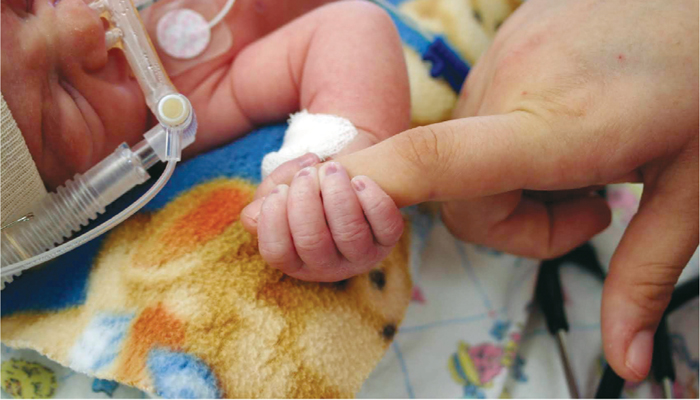
What effects do you hope the new policy for enteral nutrition will have on care standards in Japan?
“Neonatologists are very good at dealing with respiratory support and neuroprotection and these are essential, but nutrition is not regarded as a crisis and often gets overlooked. I hope that the policy will increase awareness of the importance of nutrition for preterm infants.”
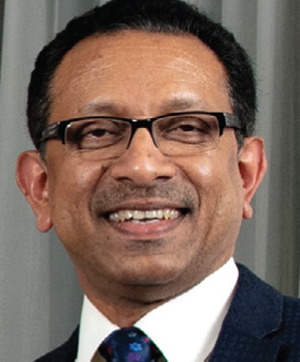
Professor Roy Philip is Adjunct Clinical Professor of Neonatology and Consultant Paediatrician and Neonatologist at UL Hospitals, Limerick, Ireland. His neonatal unit is the first in Ireland to introduce an EHMD.
What prompted you to implement an EHMD in your unit?
“Unfortunately in Ireland the breastfeeding uptake for term babies is not great and consequently in the past we had a significant number of preterm and VLBW infants who were exposed to cows’ milk-based products. With extreme prematurity and very low birth weight we usually fortify the breast milk, which means whatever we add becomes part of the feed. We wanted to establish ourselves as a breast milk-based unit to reduce morbidity and mortality.”
How did you begin to implement the diet and did you face any challenges along the way?
“It began as a quality improvement project 10 years ago when we had relatively low breast milk uptake in the neonatal unit. We improved upon this year-on-year. There were two phases to the task; firstly, we wanted to go from being a formula-based unit to a breast milk-based unit. Implementing a human milk diet in any unit is challenging and requires clinical leadership and a dedicated team. However, if we can achieve this goal, any unit can.
“Having established ourselves as a breast milk-based unit we then wanted to use fortifier that was made from only human milk products. Using a combination of fresh maternal breast milk (supplemented by DHM if needed) with the addition of human milk-based fortifier is the best intervention to optimise a baby’s nutrition.”
What favourable outcomes have you seen with your approach?
“We have reduced morbidity and mortality. The babies grow faster, the NEC rate has come down – we have created a NEC-free neonatal unit. A consistently low NEC rate, however, is just the top of the pyramid; look below this and we see low sepsis rates, shorter durations of long-lines, less total parenteral nutrition (PN), less antibiotic use, etc.”
Your unit now uses an EHMD for some subsets of premature infants. Which babies do you select and why?
“For over five years all of our extremely low birthweight infants have received breast milk and in early 2019 we started using human milk-based fortification. To date, 12 VLBW infants on our unit have been offered an EHMD. When it comes to breast milk for vulnerable premature infants, my approach would be the three Es: early, enterally and entirely.”
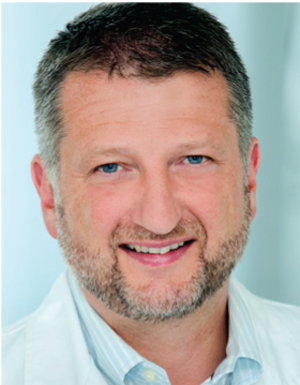
Professor Christoph Fusch from Nuremberg General Hospital, Germany, works on lactoengineering and postnatal growth in VLBW infants.
What is lactoengineering and why did you choose lactoengineering-based fortification rather than standard fortification?
“Human breast milk is highly variable in composition in terms of carbohydrate, protein, fats and energy. It is therefore hard to know what we need to ‘put in’ to adequately fortify the breast milk. Preterm infants have high growth rates and high nutritional needs. Some preterm babies do not achieve optimal growth with standard fortification, they are undernourished and current feeding practices are not sufficient to meet the nutritional needs of these infants. We analyse the breast milk and measure these macronutrients and from this we can individualise the fortification of breast milk. This is called lactoengineering.”
This sounds complicated; does it require a lot of special equipment?
“No, we have a sonicator to homogenise and a small tablet-like device to analyse. It takes 1-3 minutes. It’s comparable to performing blood gas analysis to guide ventilation strategies. All units perform blood gas analysis, so why not individualised target fortification?”
What experience have you had with an EHMD?
“I was lucky to gain experience with an EHMD 10 years ago in North America where I saw the benefit of this on gut health and NEC prevention. Babies tolerate this type of feeding better and they have fewer line days and consequently less sepsis. When I came back to Germany we had relatively high NEC rates in the unit. We worked very hard to bring down our sepsis rates by starting to feed earlier, having fewer line days and putting infection prevention measures in place. The sepsis rates came down and our NEC rates came down but we didn’t get down to zero. We decided that the next step was to introduce an EHMD for our high-risk babies. It’s too soon to say for sure if this has worked, but last year we did not see any NEC cases.”
How do you define and measure growth for VLBW infants on an EHMD?
“We use weight charts, classic intrauterine growth charts and we have also developed the concept of individualised growth trajectories, which take into account the preterm baby’s weight loss after birth. For each baby we have an individualised trajectory to work out how best it can achieve its target weight. We compare our weight gains against these trajectories, which we have valid-ated in eight cohorts of 14,000 subjects with known outcomes. This concept helps us to monitor growth and guide nutrition.”
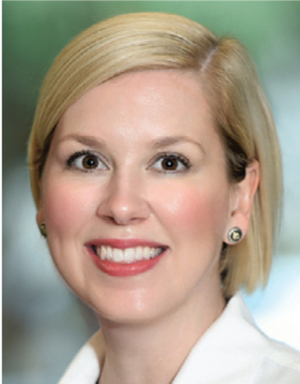
Dr Amy Hair is Program Director of the NICU Intestinal Rehabilitation Team at Texas Children’s Hospital, USA. She successfully manages the nutrition of infants with short bowel syndrome using an EHMD.
Can you tell us about the challenges that babies with short bowel syndrome face?
“Depending on how much bowel they lose, babies with short bowel syndrome can be on long-term PN. They can have developmental delays, they have lots of hospitalisations. It’s a lifelong condition. Most can eat when they are older but usually not a normal diet.
“Nowadays we have more survivors. Eight years ago if a baby had 10cm of bowel, the clinicians would tell the parents there was nothing they could do, they wouldn’t save the baby, but now these babies are running around at three years of age and off PN.
“The biggest cause of short bowel syndrome is NEC and if we can prevent NEC with an EHMD then we don’t have to worry about long-term outcomes.”
When did Texas Children’s Hospital implement an EHMD?
“We have been using an EHMD at Texas Children’s Hospital for 11 years and we have been able to prevent NEC. We started using DHM and Prolacta’s human milk-based fortifiers in 2009. Our NEC rate went from 16% to a consistent 2-3%. We have spent a lot of time optimising our feeding.”
What outcomes or morbidity data have you tracked and what were your findings?
“We noticed that the babies who were on an EHMD were simply doing better than those that were not. The neonatal journey is often described as a ‘rollercoaster ride’ but these babies had less bumps in the road – they didn’t have a lot of complications. We did a before (bovine diet) and after (EHMD) study and found that we had less NEC, less infection, less retinopathy of prematurity, less lung disease and less death. Not only did these babies survive prematurity but they also had less morbidity.”
What advice about an EHMD can you offer to those working with premature babies?
“In the US, we have been using an EHMD for several years now but the human milk-based fortifier has only been available in Europe for the last year. As someone with lots of experience with an EHMD I’d say it’s good for the babies; it’s one of those products that really improves outcomes – you should try it.”
Or read this article in our
Tablet/iPad edition


